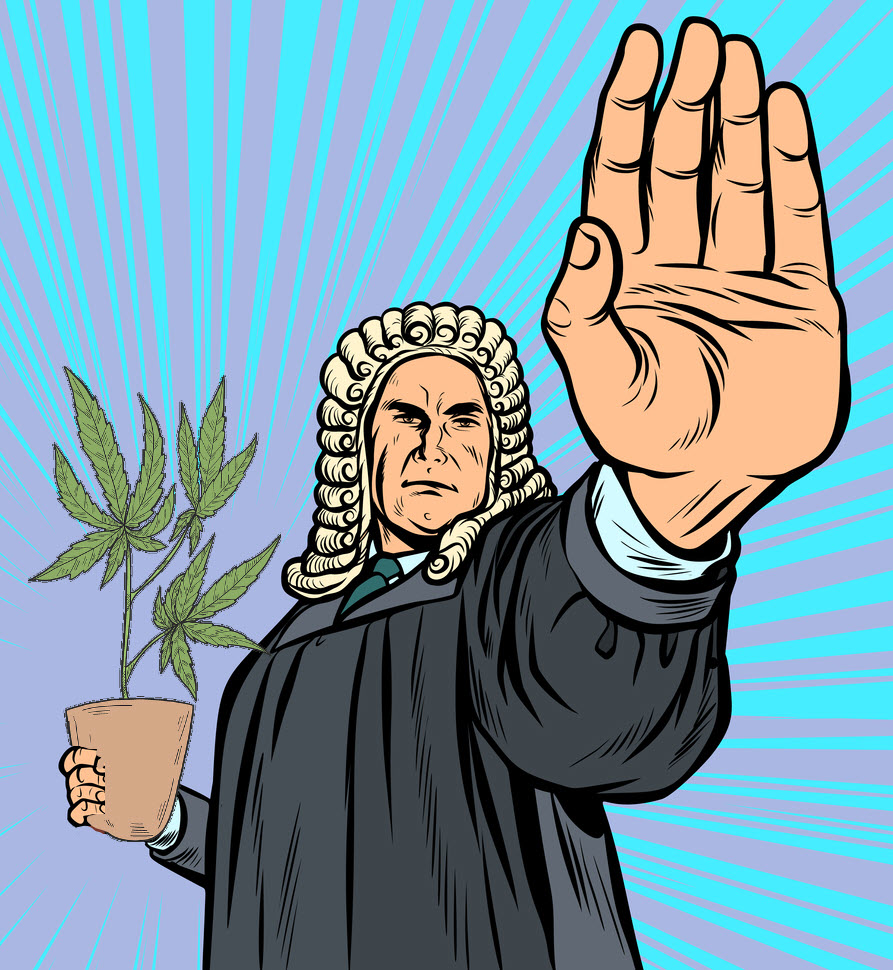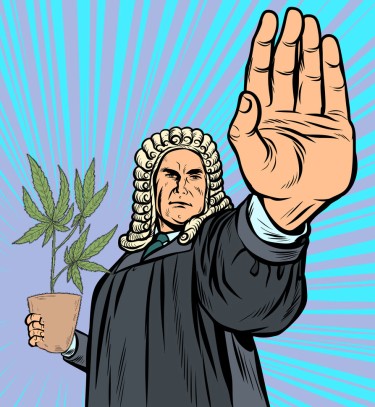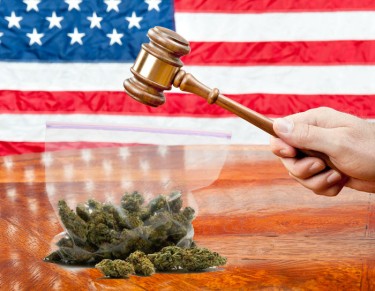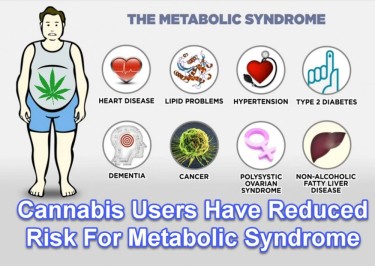Cannabis News
Why Does Time Seem To Stand Still When You Are High?
Published
8 months agoon
By
admin

Think back to early February when you might have heard about a group of mail carriers in Clapham. They got into trouble during their work shift because they accidentally ate some brownies with drugs in them.
In a viral video, one person said they felt like they were walking forever while delivering mail. If you’ve ever used cannabis, you probably know how it can mess with your mind and make time feel strange, mainly if you use it too much. Have you ever been so high that you started questioning if time is real for humans?
People often talk about how using cannabis can make time feel distorted, but why does this happen exactly?
Exploring the Link Between Cannabis and Time Distortion: Historical Insights
In 1846, French physician Jacques-Joseph Moreau delved into the impact of cannabis on artists who consumed hashish. His observations, detailed in the publication “Hashish and Mental Illness: Psychological Studies,” revealed that hashish led to “errors of time and space” and a sense of “time dragging.”
Many cannabis users can relate to the sensation of time coming to a sudden halt when the high sets in. Seconds may stretch into minutes, which can feel like hours. Checking the clock might reveal that what seemed like half an hour was only ten minutes.
In recent times, researchers have aimed to unravel the effects of cannabis on time perception. Multiple studies have been conducted, and a 2012 review in Current Pharmaceutical Design examined existing literature.
The review found that “70% of time estimation studies report overestimation,” indicating that cannabis users often feel more time has passed than it has. This phenomenon, commonly called time dilation, involves the perception that time is moving slower.
Nevertheless, existing studies on the effects of cannabis on time perception have faced methodological limitations, leaving the precise impact inconclusive. To overcome these shortcomings, researchers adopted a randomized, double-blind, placebo-controlled approach, considered the “gold standard” in experimental design.
Forty-four participants received injections of THC, the mind-altering compound in cannabis, at doses ranging from 0.015 mg/kg to 0.05 mg/kg or a placebo. Before and after drug administration, participants engaged in various time-related tasks, estimating elapsed time or producing a specific duration.
The findings, published in Psychopharmacology in 2014, revealed that a psychoactive dose led to the overestimation and underproduction of time, indicating the presence of time dilation. Interestingly, the severity of these effects did not align with the administered dose, introducing further complexity to the relationship between cannabis and time perception.
Understanding Time Perception: The Role of THC in the Brain
Contrary to directly slowing down time, THC (the active compound in cannabis) seems to influence our internal clock, causing our subjective sense of time to pass more slowly than objective time. While the exact mechanism remains unclear, a hypothetical explanation has been proposed.
Certain researchers suggest that cannabis influences our time perception by interacting with the thalamic-corticostriatal circuit in the brain. Previous studies have highlighted the importance of this circuit in cognitive control, including the perception of time, and the brain areas within it are densely populated with cannabinoid receptors.
Cannabinoid receptors, forming the endocannabinoid system (ECS) throughout the brain and body, are crucial for coordinating various biological processes. The theory posits that when cannabis is consumed, THC enters the brain and binds to these receptors, disrupting the activity of the thalamic-corticostriatal circuit. This disruption is responsible for distorting our perception of time.
This notion is further supported by the fact that smoking cannabis results in a higher sense of time dilation than taking cannabis edibles. This is because inhaling cannabis causes THC levels to peak sooner, resulting in a more potent cannabinoid flush in the brain.
In a similar vein, the previously noted 2014 study discovered that those who smoked cannabis two to three times a week or more had “blunted THC’s time-altering effects.” Hence, it is believed that regular cannabis users grow accustomed to these perceptual effects but not to the euphoric effects of THC.
Despite this tenable idea, there hasn’t been much research done on how cannabis affects time perception, and the results are still primarily equivocal. While it is well-accepted that THC produces time dilation, the extent and the underlying mechanisms of this effect still need to be understood.
Eventually, cutting-edge neuroimaging methods should enable scientists to determine precisely how cannabis chemicals affect these timekeeping brain circuitry.
Cognitive Function is Influenced by Changes in Time Perception.
Fundamentally, timing matters. It is essential to all actions, behaviours, and cognitive processes. And when we can’t schedule ourselves precisely, everything that makes normal functioning possible becomes thrown off.
Even though these time-slowing effects can seem like a drawback, there are many ways in which they could be advantageous to the user—especially in the creative industry.
It is well acknowledged that the mind-altering properties of the cannabis plant influenced the early 20th-century jazz movement. Jazz artists could play with rhythms and rhythm by warping their timekeeping, which led to expressive melodies that quickly became recognized as the genre’s signature.
In a similar vein, cannabis is frequently promoted as a tool to improve creativity by artists. Specifically, time dilation can help artists slow down and become more in tune with their work, fostering creativity.
Time dilation can be a big assistance for people who have trouble living in the moment, even cannabis users who aren’t artistic. You’re probably more aware of the present moment and, possibly, have a deeper appreciation for your immediate surroundings and current location when you have a slower sense of time. This could be very helpful for anyone who needs a little help with their mindfulness and meditation practices.
Still, having a distorted sense of time is not always pleasant. Some people may find this sensation quite disturbing, and it could even make them feel anxious or panicked. Lead researcher for the 2014 study and Yale psychiatry professor Deepak D’Souza expressed his curiosity at the finding that “in certain individuals who…experienced time dilation, the overall experience was even more unpleasant.”
A specific memory that comes to mind is of a friend who was suffering from the effects of a potent space cake and said, “I think it might be time travel…or the end of my life.” For some people, the benefits of cannabis can be the best way to relieve stress. However, as others are aware, the plant’s time-bending properties aren’t suitable for everyone.
CANNABIS DISTORTS TIME, READ ON…
You may like
-


Tips For Guys To Get A Dating App Response
-


A Fun Habit Can Help Calm Anxiety
-


Trying to expand a cannabis business, surrounded by moratoriums
-


Ousted Shannon O’Brien vows legal battle over pot board firing
-


Good Grades: 3 things I can’t smoke without
-


Cannabis Control Commission to Host Public Comment Period, Hybrid Hearing on Amendments to Microbusinesses, Delivery, Telehealth Regulations
Cannabis News
US Court Rules Delta-8 THC Derived from Hemp is 100% Legal, Slamming the DEA in Embarrassing Court Case
Published
2 days agoon
September 14, 2024By
admin

In a groundbreaking decision, the U.S. Court of Appeals for the Ninth Circuit has ruled that Delta-8 tetrahydrocannabinol (Delta-8 THC) derived from legal hemp sources is not classified as a controlled substance under federal law, directly contradicting the Drug Enforcement Administration’s (DEA) position that all synthetically derived tetrahydrocannabinols, including Delta-8 THC, fall under Schedule I controlled substances. This landmark ruling emerged from a case brought forward by several key players in the hemp industry who challenged the DEA’s interpretation of the 2018 Farm Bill, which legalized hemp and its derivatives. The court’s decision not only rejects the DEA’s restrictive stance but also provides much-needed clarity regarding the legal status of Delta-8 THC, allowing for its continued production and sale from legally sourced hemp. This ruling is significant as it has the potential to reshape the regulatory landscape for cannabinoids, encouraging further exploration and commercialization of hemp-derived products while also highlighting the ongoing tensions between federal regulations and the rapidly evolving hemp industry.
Delta-8 THC: A Naturally Occurring Cannabinoid
Delta-8 tetrahydrocannabinol (Delta-8 THC) is a naturally occurring cannabinoid found in trace amounts in hemp and cannabis plants that shares a similar molecular structure to Delta-9 THC, the primary psychoactive compound in marijuana, but is known to produce significantly milder intoxicating effects; the 2018 Farm Bill’s legalization of hemp and its derivatives containing no more than 0.3% Delta-9 THC on a dry weight basis created a legal gray area for Delta-8 THC, which has proliferated in the form of various products derived from legal hemp sources and sold in a largely unregulated market, as they are not explicitly classified as controlled substances by the Drug Enforcement Administration (DEA) despite the agency’s stance that all synthetically derived tetrahydrocannabinols should be treated as Schedule I drugs regardless of their origin or potency, a position that has been challenged by hemp industry players arguing that Delta-8 THC from legal hemp should be exempt from the same restrictions as Delta-9 THC.
The DEA’s Stance and Industry Challenges
The Drug Enforcement Administration (DEA) has taken a firm stance that all synthetically derived tetrahydrocannabinols, including Delta-8 THC, are classified as Schedule I controlled substances under the Controlled Substances Act (CSA), regardless of their source or concentration. This position has faced considerable resistance from various stakeholders within the hemp industry, who argue that Delta-8 THC derived from legal hemp should not be subjected to the same stringent restrictions as Delta-9 THC, the primary psychoactive compound in marijuana. Proponents contend that the 2018 Farm Bill, which legalized hemp and its derivatives, should extend to include Delta-8 THC, allowing it to be treated as a legal product when sourced from hemp that contains less than 0.3% Delta-9 THC. They emphasize that while Delta-8 THC may occur naturally in small amounts in hemp, the majority of Delta-8 products on the market are produced through a chemical conversion process from CBD, which the DEA argues renders them synthetic and thus illegal. This conflict has led to ongoing legal challenges, with some courts ruling in favor of the hemp industry, asserting that Delta-8 THC should not be classified as a controlled substance when derived from legal hemp. As the debate continues, the tension between the DEA’s regulatory framework and the evolving hemp market raises critical questions about the future of cannabinoid regulation in the United States.
The Court’s Ruling and Its Implications
The U.S. Court of Appeals for the Ninth Circuit ruled that Delta-8 THC derived from legal hemp sources is not controlled substance.
-
The court found the DEA’s interpretation of the law was “arbitrary and capricious” and lacked a reasoned explanation.
-
This ruling effectively removes Delta-8 THC from the DEA’s list of controlled substances, provided it is derived from hemp containing less than 0.3% Delta-9 THC.
-
The decision provides legal protection for businesses and consumers involved in Delta-8 THC products derived from legal hemp sources.
Opportunities for the Hemp and Cannabis Industries
The recent court ruling represents a significant victory for the hemp and cannabis industries, paving the way for new possibilities in product development and research.
-
Therapeutic Potential: Delta-8 THC has been recognized for its potential therapeutic benefits, which could attract more consumers seeking alternative treatments.
-
Increased Investment: The legalization of Delta-8 THC may lead to heightened investment and innovation within the sector, encouraging the development of new products and formulations.
-
Regulatory Concerns: Despite the positive implications, the ruling also raises important concerns regarding the regulation and quality control of Delta-8 THC products, necessitating careful oversight.
-
Need for Standards: As the market for Delta-8 THC expands, there will be a pressing need for clear guidelines and standards to ensure consumer safety and product consistency, helping to build trust in these emerging products.
Broader Implications for Cannabis Legalization
The court’s ruling underscores the ongoing conflict between federal and state laws concerning the regulation of cannabis and its derivatives.
-
Increasing State Legalization: As more states advance toward the legalization of both recreational and medical marijuana, the pressure on the federal government to revise its policies and align them with shifting public opinion is likely to intensify.
-
Step Forward for Delta-8 THC: The ruling regarding Delta-8 THC may be viewed as a positive development in the broader context of cannabis legalization, yet significant challenges remain.
-
Path to Comprehensive Legalization: There is still a considerable distance to cover before achieving comprehensive federal legalization of cannabis, highlighting the complexities of navigating cannabis policy in the United States.
Conclusion
The court’s ruling underscores the ongoing conflict between federal and state laws concerning the regulation of cannabis and its derivatives. As more states advance toward the legalization of both recreational and medical marijuana, the pressure on the federal government to revise its policies and align them with shifting public opinion is likely to intensify. The ruling regarding Delta-8 THC may be viewed as a positive development in the broader context of cannabis legalization; however, significant challenges remain, and there is still a considerable distance to cover before achieving comprehensive federal legalization of cannabis, highlighting the complexities of navigating cannabis policy in the United States.
DELTA-8 THC IS LEGAL, READ MORE…
Cannabis News
What Is It, Why You Should Care, and How Cannabis Helps
Published
2 days agoon
September 14, 2024By
admin

Metabolic syndrome is an umbrella term referring to several conditions that negatively impact how the body metabolizes carbohydrates, fats, and proteins.
It occurs when there are unusual, abnormal chemical processes in the body which affect otherwise healthy metabolic functions. The primary symptoms of metabolic syndrome include abdominal fat, high blood pressure, high blood sugar, high triglycerides, and low levels of LDL (good) cholesterol. These conditions all greatly increase the risk of stroke, coronary heart disease, diabetes, and other severe health issues that are difficult or near impossible to reverse.
The most telling symptom, though, is a large waist circumference – and you don’t need to take any kind of medical test to tell you this because it’s completely visible.
That’s why prevention is key when it comes to metabolic syndrome. However, the choices you make on a daily basis in your lifestyle can determine your risk for metabolic syndrome of not. We know that an unhealthy diet that is high in sugar, salt, and processed food can contribute to the symptoms of metabolic syndrome. A sedentary lifestyle, obesity, poor sleep hygiene, and exposure to chronic stress can also make the risk much worse. Smoking tobacco and alcohol are even worse – don’t even think about it.
But cannabis? That can actually help!
What Studies Say
A recent study that was published in the American Journal of Open Medicine found that young adults with a habit of consuming cannabis had a significantly lower prevalence of metabolic syndrome. For the study, investigators from the University of Miami analyzed a cohort of almost 4,000 individuals whose ages ranged from 18 to 25. They specifically zoned in on the young adults’ cannabis use.
They found that current cannabis users were 42% less likely to have metabolic syndrome. They also found that Non-Hispanic Blacks, who were consuming more weed than the other subjects, were found to be the least likely of all to have metabolic syndrome. “Current cannabis users had a lower prevalence of MetS, predominantly noted among NHB (non-Hispanic Blacks], the group with the highest prevalence of current cannabis use,” said the study’s authors. “Future prospective studies are warranted to examine the role of specific cannabinoids on MetS by race/ethnicity,” they said.
A Smaller Waist Circumference: Why You Should Pay Attention, And How Weed Can Help
Having a large waist circumference or a visibly fatty belly has been associated with numerous health conditions. Of course, this includes a heightened risk of metabolic disease. It also increases the risk of inflammation, type 2 diabetes, cardiovascular disease incidence, and cancer among others.
That is why it’s critical to pay attention to the size of your stomach. A smaller waist means you have a smaller amount of visceral fat, which is necessary for better health and an improved quality of life.
There are many steps you can take to reduce your visceral fat. These include:
-
Sticking to a low carbohydrate and low sugar diet
-
Having a diet high in good protein sources
-
Reduce consumption of trans fat and saturated fats
-
Engage in strength training and cardiovascular exercises
-
Manage stress effectively
Last but not the least: did you know that consuming cannabis has been shown to be associated with smaller waistlines and a reduced risk for obesity?
In 2020, a study out of Quebec in Canada revealed that cannabis consumption was linked to a smaller waist and reduced triglyceride levels. For this study, the investigator in Canada analyzed subjects who either never consumed marijuana in the past, used it sometime in the past but had no recent use, had some infrequent use, or consume it infrequently. They specifically measured the participants’ waist circumference and triglycerides.
They found out that the subjects who consumed certain marijuana strains for metabolic syndrome for at least 4 days per week were found to have smaller waistlines as well as less triglycerides compared to the other participants in the study.
Another study from 2015, also out of Quebec, was conducted by researchers from the Conference of Quebec University Health Centers. They analyzed cannabis consumption patterns of 786 Arctic aboriginal adults, the Inuits. The investigators also analyzed their body mass index to search for any links between cannabis use and BMI.
They found that study participants who consumed marijuana within the last year were more likely to have a lower body mass index, as well as reduced fasting insulin and better insulin resistance (using the HOMA-IR indicator) compared to those who did not.
“In this large cross-sectional adult survey with high prevalence of both substance use and obesity, cannabis use in the past year was associated with lower BMI, lower percentage fat mass, lower fasting insulin, and HOMA-IR,” said the researchers. In other words, they observed a relationship between cannabis use and BMI that led them to conclude that cannabis and cannabinoid use can help consumers reduce the likelihood of obesity and diabetes.
Meanwhile, an older study from 2013 also had similar results. Research data from The American Journal of Medicine taken from more than 4,600 patients yielded interesting findings. Almost 45% of patients never consumed marijuana in their lives, while 43% of them smoked in the past though no longer do currently. And 12% of them were regular cannabis users.
Researchers discovered that cannabis users who consumed marijuana within the past month had 16% less fasting insulin levels compared to those who never consumed weed. In addition, they even add reduced HOMA-IR levels and higher high-density lipoprotein. Furthermore, the investigators found that regular cannabis users who usually consume more calories, they also had lower BMI’s.
Conclusion
Staying fit and healthy is much more than vanity: science and medical research makes it clear that there is a strong link between obesity and body mass index, to overall health and wellness. Metabolic syndrome further emphasizes the importance of keeping one’s BMI normal, and based on these studies, that’s something cannabis can help with. Integrating responsible cannabis use into your lifestyle is one tool out of many that can help you stay healthy and reduce the risks of developing metabolic syndrome.
MORE ON METABOLIC SYNDROME AND WEED, READ ON…
Cannabis News
More Bad News for Intoxicating Hemp (California, Missouri, New Jersey)
Published
3 days agoon
September 13, 2024By
admin
Last week, I wrote a post entitled “Loper Comes For the DEA. Will it Matter Though?” In that post, I discussed a brand new federal Fourth Circuit Court of Appeals case that concluded that hemp derivatives like THC-O are not controlled substances. The hemp community has largely celebrated this as a win, even though as I wrote in that post and back in July, none of this really matters if Congress bans intoxicating hemp products – which looks like it will happen.
On the heels of the Fourth Circuit case, a few things happened that don’t make life easier for people who want intoxicating hemp products.
Probably the most significant of the bad news, the California Department of Public Health (CDPH) issued emergency regulations to ban a series of intoxicating hemp products. A lot has been written about these regulations, but it’s worth pointing out that California’s hemp law (AB-45) was already not very favorable to smokable hemp products.
For example, AB-45 already prohibits smokable hemp products. And more notably, it defines THC to include THCA and “any tetrahydrocannabinol, including, but not limited to, Delta-8-tetrahydrocannabinol, Delta-9-tetrahydrocannabinol, and Delta-10-tetrahydrocannabinol, however derived”. In other words, all of the various things that are defined as THC – and there are many – must already not exceed 0.3% in the aggregate. This means that a host of products were already de facto banned in the state.
While, to be sure, the new emergency regulations take things farther, I think it would be inaccurate to describe this as a “sea change” in how hemp products are regulated in the state. What remains to be seen is whether CDPH or other agencies ramp up enforcement in any meaningful way. It’s California, so my guess is no.
California’s not the only state taking aim at intoxicating hemp products. Just the other day, Missouri’s Attorney General created a new task force to crack down on intoxicating hemp products. New Jersey’s Governor also signed a bill cracking down on intoxicating hemp products.
All this just adds to the long list of states and municipalities that had been going after unregulated intoxicating hemp products prior to the Fourth Circuit’s decision – often for violations of state or local law which are unlikely to be impacted by the federal case. And of course, if Congress gets around to banning intoxicating hemp products, that will likely be the last straw for many of these products.

Tips For Guys To Get A Dating App Response

A Fun Habit Can Help Calm Anxiety

Trying to expand a cannabis business, surrounded by moratoriums

Ousted Shannon O’Brien vows legal battle over pot board firing

Good Grades: 3 things I can’t smoke without

Cannabis Control Commission to Host Public Comment Period, Hybrid Hearing on Amendments to Microbusinesses, Delivery, Telehealth Regulations

‘I visited Snoop Dogg’s new pungent European cannabis café tucked down an unlikely street’

New York City-Based Dispensary Wants to Buy back Your Illegal Weed

Buying Cannabis Without Identification – GanjaVacations Jamaica

A Green Solution for Our Environment and Industries

Distressed Cannabis Business Takeaways – Canna Law Blog™

United States: Alex Malyshev And Melinda Fellner Discuss The Intersection Of Tax And Cannabis In New Video Series – Part VI: Licensing (Video)

What you Need to Know

Drug Testing for Marijuana – The Joint Blog

Cannabis, alcohol firm SNDL loses CA$372.4 million in 2022

NCIA Write About Their Equity Scholarship Program

It has been a wild news week – here’s how CBD and weed can help you relax

A new April 20 cannabis contest includes a $40,000 purse

City Of Oakland Issues RFP For Employee Training Programs

Your Go-To Source for Cannabis Logos and Designs
Trending
-

 Cannabis News1 year ago
Cannabis News1 year agoDistressed Cannabis Business Takeaways – Canna Law Blog™
-

 One-Hit Wonders1 year ago
One-Hit Wonders1 year agoUnited States: Alex Malyshev And Melinda Fellner Discuss The Intersection Of Tax And Cannabis In New Video Series – Part VI: Licensing (Video)
-

 Cannabis 1012 years ago
Cannabis 1012 years agoWhat you Need to Know
-

 drug testing9 months ago
drug testing9 months agoDrug Testing for Marijuana – The Joint Blog
-

 Marijuana Business Daily1 year ago
Marijuana Business Daily1 year agoCannabis, alcohol firm SNDL loses CA$372.4 million in 2022
-

 Education2 years ago
Education2 years agoNCIA Write About Their Equity Scholarship Program
-

 Cannabis1 year ago
Cannabis1 year agoIt has been a wild news week – here’s how CBD and weed can help you relax
-

 California1 year ago
California1 year agoA new April 20 cannabis contest includes a $40,000 purse






